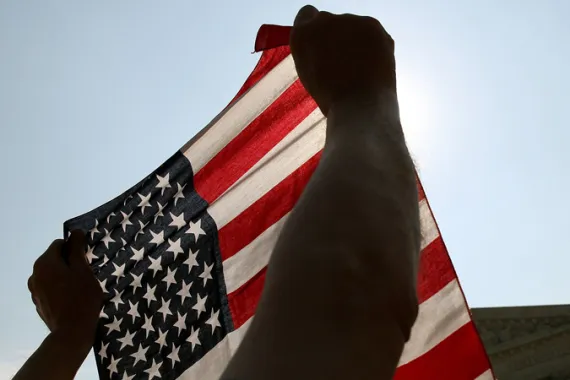
All because the rich always steal from the poor.
The best days of the American economy have been through a long time, and better days for the US are unlikely in the near future.
The idea of the twentieth century of an “American dream” – where a considerable majority of people in the US could become or aspire to become rich or even extremely rich – is practically dead in the second trimester of the 21st century.
According to a February Moody’s Analytics report, the richest 10% of Americans (families with annual income of at least $ 250,000) boosted half of all US consumer spending (about $ 10 trillion) between September 2023 and September 2024.
The fact that 12.7 million homes could collectively spend more than the rest of the nation is really jaw -dropping. This points to the end of an economy that has mainly depended on the needs and discretionary spending of ordinary American workers since the end of World War II.
The biggest surprise of all at the end of the American dream, however, is that for tens of millions of Americans, this is not a surprise. The dismantling of the American dream and consumer capitalism that defined the 1945 nation to the burst of the real estate bubble in 2008 began over half a century ago.
The gradual austerity imposed by leaders to social welfare and education programs, combined with several rounds of tax cuts for the rich and corporations, ended social mobility, especially for Americans who lived in poverty.
The transition from jobs in the job industry in the service industry, along with automation, regional change, personnel reduction and the outsourcing of millions of other jobs, the overload of millions of Americans with health debts and higher education… all these changes and more transformed the American middle class into a class of fighters rather than hardworking. And the worst is that this is exactly what the richest Americans wanted for decades.
According to most experts, the economic power of ordinary Americans hit the peak at some point between 1970 and 1974. More than six in 10 Americans could claim middle class status, and blacks, Latinos and other color Americans began to rise to the US middle class in larger numbers.
The story tells that OPEC’s oil crisis, caused by US support to Israel during the 1973 Yom Kippur war, along with the US Midwest’s deindustrialization, toppled the US economy from 1973 to 1974 onwards. The combination of greater unemployment and greater inflation, known as stagflation, ended a sequence of three decades of economic domain and endless prosperity. But this story makes it seem that a set of unfortunate circumstances ended the American Pax. In fact, large corporations, the richest Americans, and the federal government began to divert resources from the end of poverty and the support of the US working and average classes during the 1970s.
The programs of the war against poverty/great society that President Lyndon B Johnson boosted in 1965 were the drop of water for the growing neoconservative movement. Since the late co -conservative co -conservative movement Irving Kristol wrote in his autobiographical memories about the “curse” of war against poverty, they “knew that becoming politically militant was not a way for the poor to get out of poverty.” Kristol and his followers believed that the sociological motivations for idealistic tributary policy formulators were that a “great society” could only emerge as a consequence of class struggle, “almost accusing Johnson’s policy experts from being tributary communist puppets from the Soviet Union.
Neoconservatives saw Johnson’s view of ending poverty and transferring more public taxes to really raise all Americans to prosperity as communist and dangerous. At the time of President Ronald Reagan’s conservative revolution in the 1980s, both the remnants of the Great Society and War On Poverty programs and even the social welfare system that Franklin D Roosevelt built through New Deal in the 1930s faced attacks and austerity.
Although Reagan stated in his diary in 1982 that “the press is dying to paint myself as someone who now tries to undo New Deal. I remember them that I voted for FDR 4 times. I am trying to undo the ‘great society’,” he finally demonstrated disdain for all social assistance and social mobility policies. For years, Reagan claimed that “fascism was really the basis for New Deal,” that New Deal’s policy planners working under Roosevelt “spoke with admiration about how Mussolini had made trains work on time.”
At CPAC (Conservative Political Action Conference (CPAC) dinner in 1985, Reagan stated that always “since FDR and New Deal, the opposition party, and particularly those of liberal persuasion, dominated the political debate”, but ultimately “the other side is virtually failed with ideas”. He added that “new conservatives again made the connection between economic justice and economic growth,” which was imperative for them “to institute a fair tax system and turn the current upside down.”
Especially from 1981, through corporate lobbyists and the fusion of various ideological perspectives of republican and democratic parties, the new lower tax system for the rich and corporations has taken shape.
The richest individuals in the country have paid up to 91 percent of their earnings for each dollar over $ 200,000 in the 1950s, and an income tax rate of 70 percent in the 1970s. Reagan era tax cuts reduced the highest tax rates to between 50 percent and 28 percent during the 1980s. Clinton in the 1990s, until then, investments in social welfare programs have not accompanied inflation for almost 20 years and, with welfare reform, they would never fully recover.
Since Trump’s tax cuts during their first term, corporate taxes are in a 21%historic low. These policies have led to a massive change in the richness of middle -class Americans, working class, poor and impoverished workers toward the rich and large corporations.
Carter C Price and Kathryn Edwards were the authors of a Rand Corporation work document in 2020, estimating that between 1975 and 2018, tax cuts and austerity of social welfare led to a wealth transfer of nearly $ 50 trillion from the poorest 90% of Americans to the richer 10%. Worse yet, this transfer accelerated in the 2010s to an average of $ 2.5 trillion annually-all before the COVID-19 pandemic.
Meanwhile, things have been dark for ordinary Americans in other areas of the economy. The federal minimum wage remained at US $ 7.25 since 2009 (the minimum wage has also undergone a stagnation period of eight years in the 1980s). Monopolization and downsizing continued to cost most Americans with decent wages, as half of all Americans workers earn less than $ 50,000 per year, and a quarter of all workers earn less than $ 25,000.
“If you filter statistics to include unemployed people who can’t find anything but a part-time work or who earn a poverty salary (approximately $ 25,000), the percentage is actually 23.7%. In other words, almost one in four workers is functionally unemployed in America today-hardly something to celebrate,” wrote Eugene Ludwig, the former US coin, at the beginning of the coin, at the beginning this year. For the best economy the US has seen in decades, at least that was the allegation of former President Joe Biden.
The US is then back to its pre-Grande depression economy. Except that in 2025, it is an economy in which consumer habits of the richest 10% have a huge influence compared to the poorest 300 million. You can’t really have consumer capitalism if most consumers can’t make enough money to pay rent or buy a home, take a vacation or even pay for food and basic medical care. But this was the ultimate goal of rich Americans practically all the time, with the help of both political parties. Any remaining American dream is just a mere fantasy today. All because all the ramps of access to the general prosperity of the middle class were bombarded.
Originally published by Al Jazeera on 27/03/2025
Por Donald Earl Collins
Donald Earl Collins is a professor at American University in Washington, DC. Collins is the author of fear of a “black” America: multiculturalism and the African-American experience (2004).
The opinions expressed in this article are by the author and do not necessarily reflect the editorial position of Al Jazeera.
Source: https://www.ocafezinho.com/2025/03/29/o-sonho-americano-acabou-oficialmente/

